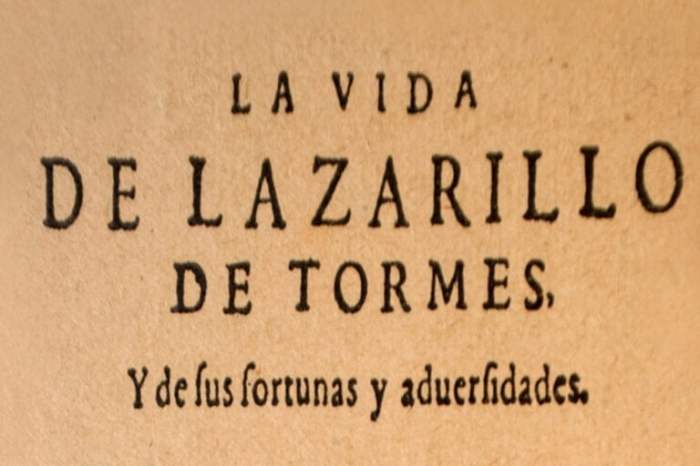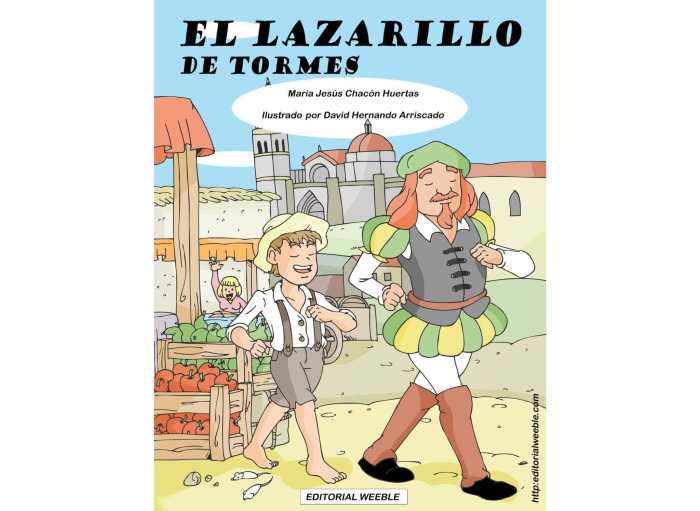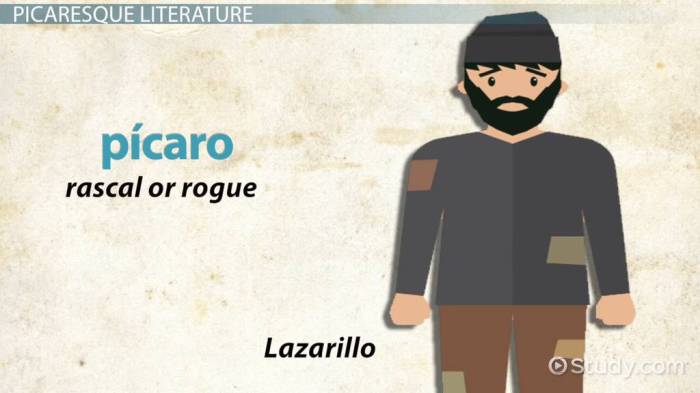Embarking on the literary odyssey known as “Resumen de Lazarillo de Tormes Tratado 1,” readers will encounter a captivating tale that explores the depths of social inequality, class struggles, and the resilience of the human spirit. This anonymous masterpiece of Spanish literature, written during the 16th century, offers a vivid and often humorous portrayal of life in Renaissance Spain.
The narrative follows the journey of Lázaro de Tormes, a young boy born into poverty who serves a succession of masters, each representing a different facet of Spanish society. Through his encounters with these masters, Lázaro learns valuable lessons about life, the nature of human relationships, and the complexities of social hierarchy.
Character Introduction

Lázaro de Tormes, the protagonist of the novel, is a pivotal figure in Spanish literature. His humble origins and complex journey serve as a lens through which the social and economic disparities of 16th-century Spain are explored.
Born into poverty and orphaned at a young age, Lázaro’s experiences reflect the harsh realities faced by the lower classes during this period. His determination to survive and his resourcefulness shape his character and provide valuable insights into the challenges of social mobility.
Lazarillo’s Masters
Throughout the novel, Lázaro serves various masters, each representing a different social class and perspective. These experiences expose him to the complexities of Spanish society and the power dynamics that govern it.
- The Blind Beggar:Lázaro’s first master teaches him the art of begging and deception. Through him, Lázaro learns the harsh realities of poverty and the importance of self-reliance.
- The Priest:A greedy and hypocritical figure, the Priest exploits Lázaro for his own gain. This experience exposes the corruption and moral decay within the Church.
- The Squire:A proud and impoverished nobleman, the Squire provides Lázaro with a glimpse into the superficiality and vanity of the upper classes.
- The Friar:A lecherous and gluttonous individual, the Friar embodies the moral decline and hypocrisy of the clergy.
- The Pardoner:A con artist who sells false relics and indulgences, the Pardoner represents the corruption and greed that pervaded religious practices during this time.
Themes of Society and Class, Resumen de lazarillo de tormes tratado 1
The novel portrays the stark social inequality and poverty that characterized 16th-century Spain. Lázaro’s experiences highlight the challenges faced by the lower classes and the exploitation they endured.
Through satire and humor, the novel critiques the societal norms and institutions that perpetuate social injustice. It exposes the hypocrisy of the Church, the vanity of the nobility, and the greed of the ruling class.
Literary Techniques
The novel employs the first-person perspective, providing an intimate and subjective account of Lázaro’s experiences. This technique allows readers to directly engage with his thoughts and emotions, fostering a sense of empathy and understanding.
The picaresque genre, characterized by its episodic structure and focus on the adventures of a roguish protagonist, provides a framework for exploring the social and moral complexities of the time.
The novel’s use of humor and irony adds a layer of depth and complexity to the narrative. By juxtaposing the harsh realities of life with moments of absurdity and laughter, the novel invites readers to reflect on the contradictions and paradoxes of human nature.
Cultural and Historical Context
The novel was written during the Spanish Renaissance, a period of significant social and cultural change. The influence of humanism and the Protestant Reformation challenged traditional religious and social structures, leading to a reassessment of societal norms and values.
The novel reflects the cultural and historical context of its time by depicting the tensions between traditional Catholicism and the emerging Protestant movement, as well as the economic and social disparities that shaped Spanish society during this period.
FAQ Explained: Resumen De Lazarillo De Tormes Tratado 1
What is the significance of Lázaro de Tormes as the protagonist?
Lázaro de Tormes is a relatable and compelling protagonist who represents the marginalized and impoverished classes of Spanish society. His journey allows readers to witness firsthand the challenges and injustices faced by the lower classes during the Renaissance period.
How does the novel explore themes of social inequality and poverty?
The novel vividly portrays the stark social divisions and economic disparities that existed in Renaissance Spain. Lázaro’s experiences as a servant to various masters expose the harsh realities of poverty and the struggles faced by those at the bottom of the social hierarchy.
What literary techniques are employed in the novel?
The novel utilizes a first-person perspective, allowing readers to experience the events through Lázaro’s eyes. It also employs elements of the picaresque genre, such as episodic structure, a focus on the protagonist’s survival, and a satirical tone.

